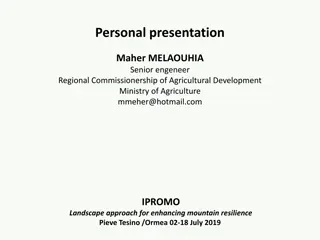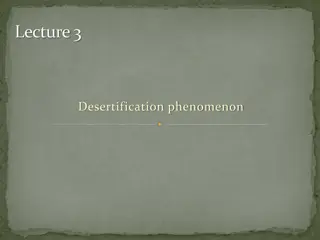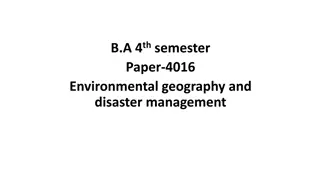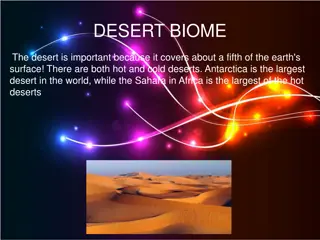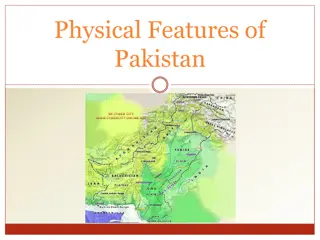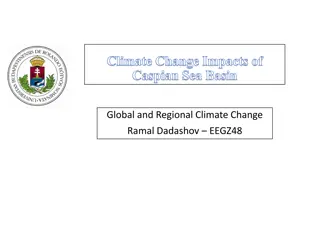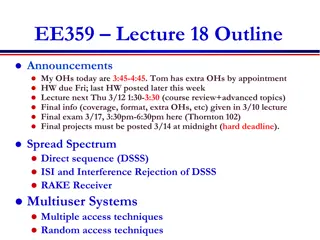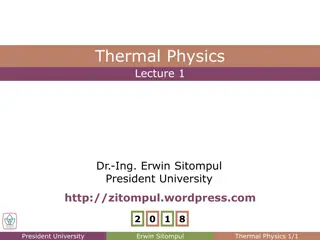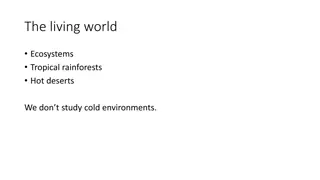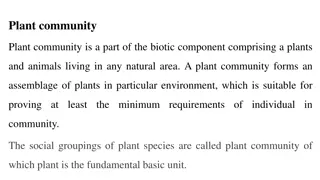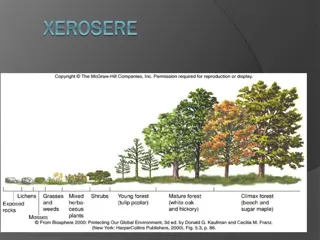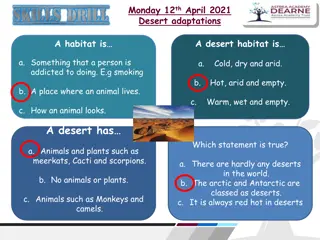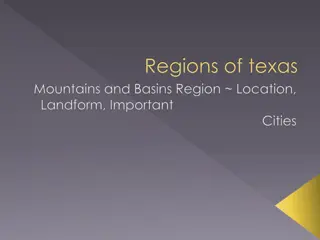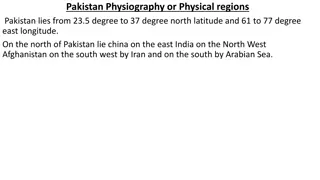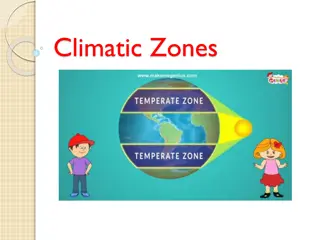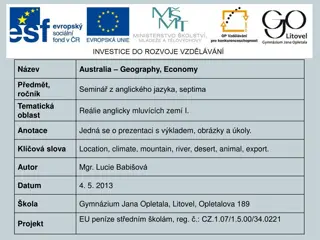Understanding Deserts and Desertification: Lecture Insights by Maher M. Mahdi
Delve into the world of deserts and desertification with valuable insights collected by Maher M. Mahdi. Explore definitions of deserts, steppe regions, and semi-arid climates. Learn about the dryness ratio, distinguishing factors between true deserts and semi-deserts, and Budyko-Lettau dryness ratio. Discover the characteristics of cold deserts covered in snow and ice, as well as hot and dry deserts with extreme temperatures. Gain knowledge on different desert types, climates, and geographical features through this informative lecture.
Download Presentation

Please find below an Image/Link to download the presentation.
The content on the website is provided AS IS for your information and personal use only. It may not be sold, licensed, or shared on other websites without obtaining consent from the author. Download presentation by click this link. If you encounter any issues during the download, it is possible that the publisher has removed the file from their server.
E N D
Presentation Transcript
Deserts and Desertification lecture 1 collected by : Maher M Mahdi
Definitions: Desert: A region which has an arid climate or where evaporation exceeds precipitation, Concentrated in sub-tropics, mid-latitudes, and polar regions Steppe: region often adjacent to a desert, steppe (semi-arid, surrounds deserts) Semiarid climate: irregular precipitation, enough to generate minimal plant growth
A common definition distinguishes between true deserts, which receive less than 250 millimetres (10 in) of average annual precipitation, and semideserts or steppes, which receive between 250 millimetres (10 in) and 400 to 500 millimetres (16 to 20 in).
Budyko-Lettau dryness ratio D = R / (L x P) where D = dryness ratio; R = mean ann. net radiation; P = mean ann. precipitation; L = latent heat of vaporization of water Original definition: D > 2.3 = semi-desert; D 3.4 = desert. UNESCO: D 10 = extreme desert
Dryness ratio 8 7 semiarid desert (D 2.3) (D 10)
Depending on temperture 1-Cold deserts: can be covered in snow or ice; frozen water unavailable to plant life. These are more commonly referred to as tundra - average precipitation is 10 inch -Cold Deserts temperature in winter ranges from -2 to 4 C and in the summer 21 to 26 C a year -Lies within 70 deg. S-N latitude
2- Hot and Dry Deserts: temperature ranges from 20 to 25 C. The extreme maximum temperature for Hot Desert ranges from 43.5 to 49 C -Lies within 18 -30 deg. S-N Latitude -Humidity decreasing - average precipitation is 10 inch with hard storms -Like Australian desert - high pressure zone (few to rare rain)
3 -Temperate Deserts and Semi-Deserts It appear in the internal part of continents, in middle latitudes -Lies within 40 -60 N-S latitude circles - It not reach to Africa and Australia - Average temp. is 18 C
Another classification depending on topography : 1. Subtropical: Those associated with the circum-global belts of dry, subtropical air (Sahara, Kalahari, Great Australian) 2. Rain shadow: Lee side of mountain ranges in the rain shadow (Sonoran). 3. Continental interiors: with low rainfall (Gobi, Takla Makan in Asia) 4. Coastal deserts, near the coast (Peru, Chile, SW Africa) 5. Polar deserts (N. Greenland, ice-free areas in Antarctica)
Subtropical Centered around 30o N and S latitude Controlled by air circulation Geographically extensive
Global Atmospheric Circulation
Subtropical Desert Examples: Sahara and Great Australian
Continental Interior- Far from sources of moisture (ocean)
Continental Interior Desert Example: Gobi in Mongolia
Types of Deserts Rainshadow- Rain shadow deserts are formed because tall mountain ranges prevent moisture-rich clouds from reaching areas on the lee, or protected side, of the range.
Rainshadow Desert Examples: Cascades and Sierra Nevada
Coastal Desert - Cool dry air blows in from the ocean and evaporates occurs as it warms.
Coastal Desert Example: Coast of Chile and Peru
Polar Cold air holds very little moisture. What little precipitation falls remains as ice for 1000's of years. Examples: Greenland and Antarctica


